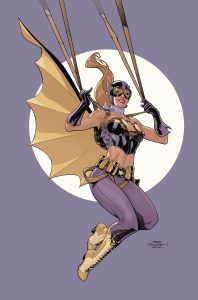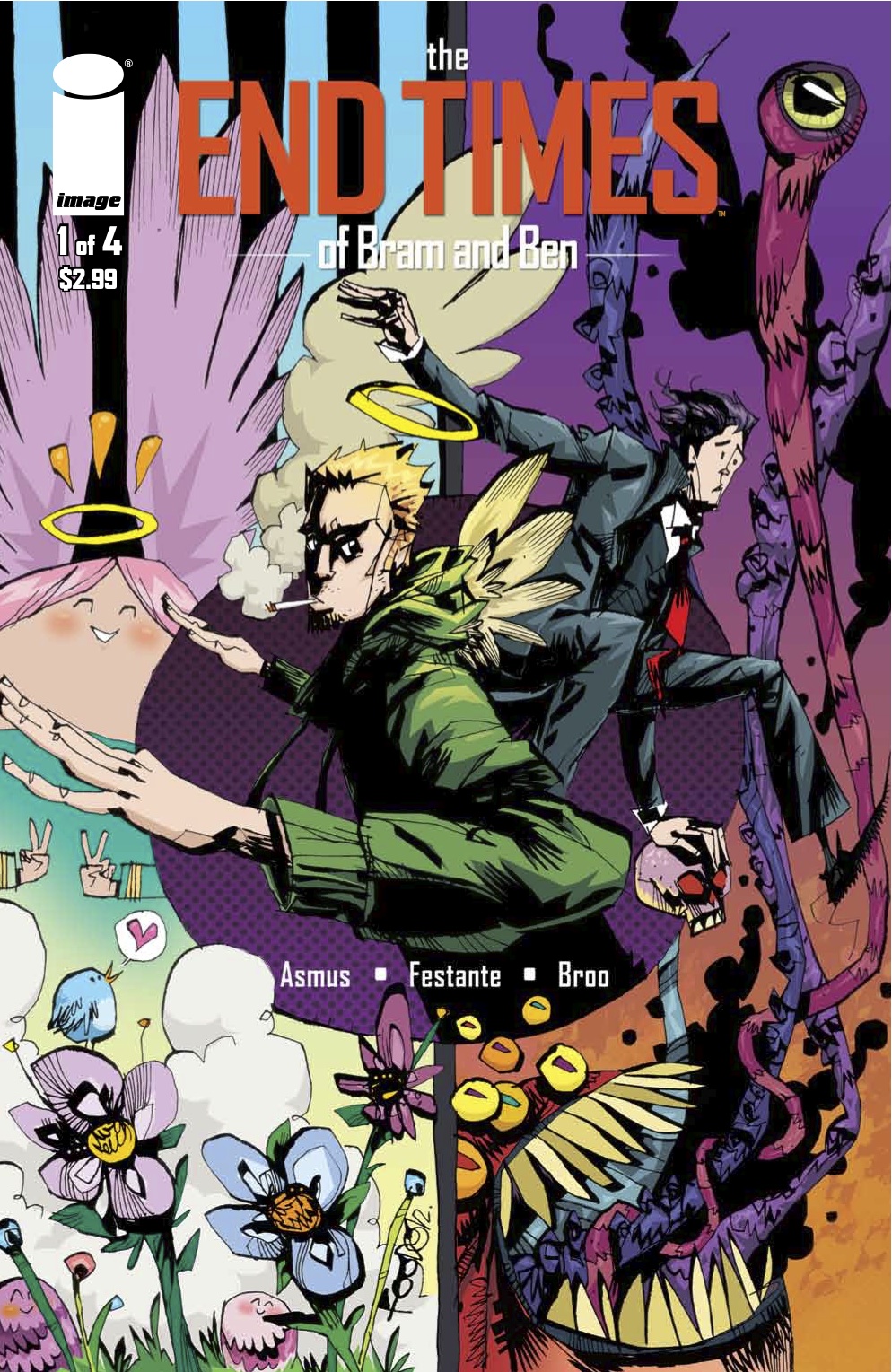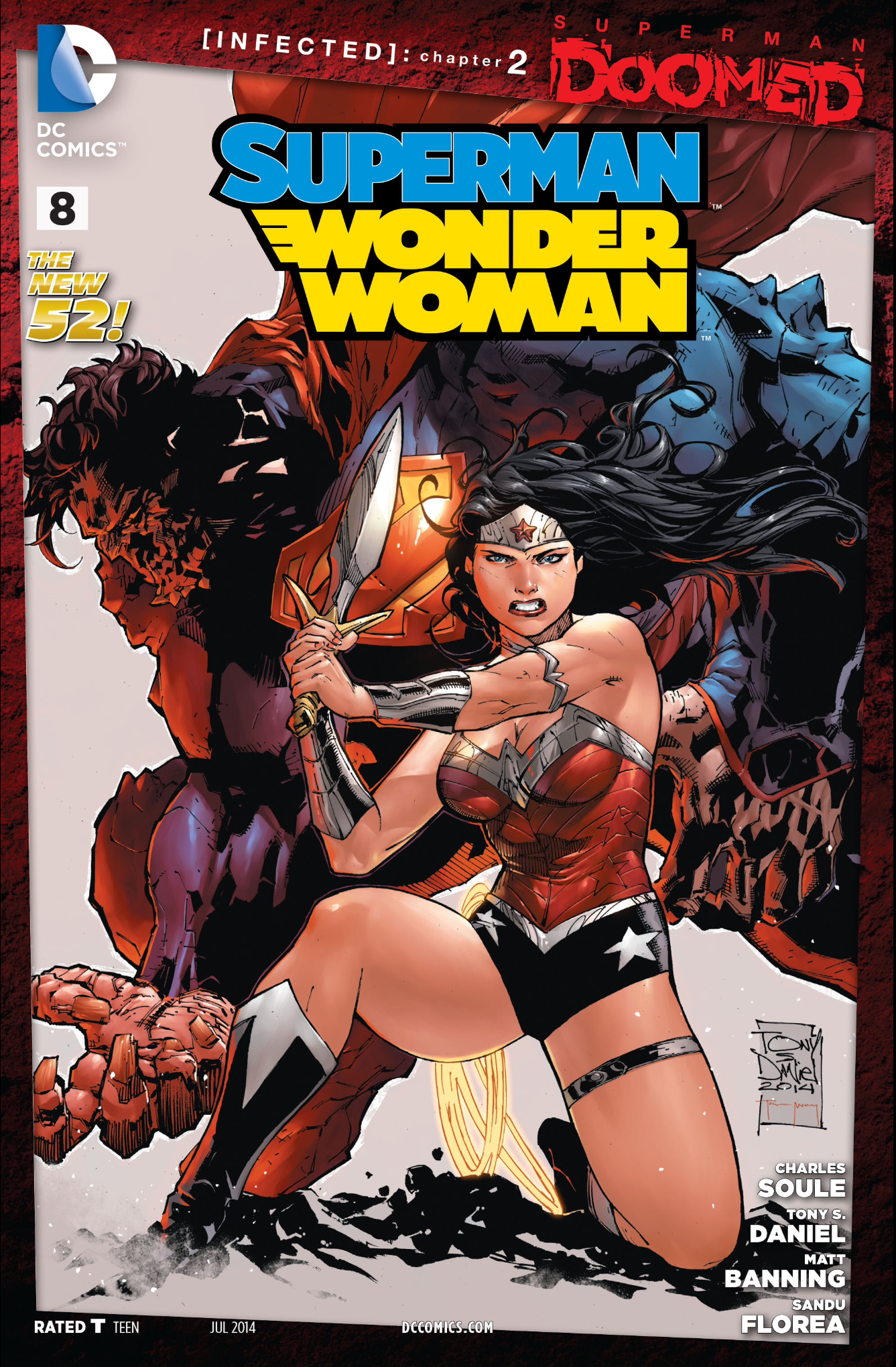DC Bombshells Annual #1 Review
Written by Marguerite Bennett (@EvilMarguerite)
Art by Elsa Charretier (@e_charretier)
Colors by Hi-Fi (@hificolor)
Letters by Wes Abbott
Reviewed by Max Mallet (@globetrottermax)
“There’s a lot of ammunition to be found in what your enemies think is their armor.”

DC Bombshells holds a very distinct place in the realm of comic book elseworlds, or alternate realities. The concept is simple and yet unique: the heroines of the DC comic book universe protect the Allied Home Front during World War Two. This annual focuses on Batgirl, who is reimagined as Barbara Gourdon: French farm girl and overall renaissance woman with a penchant for airplanes. The first half of the book focuses on Barbara’s quick rise to dogfighting glory during World War One, her sudden disappearance and Amanda Waller’s desire to find her. The second half finds Francine Charles, a spy sent to retrieve Barbara from the Louisiana bayou, in a spot of trouble and occult developments.
Marguerite Bennett has an impressive command of history, literature and the English language. This issue, though whimsical throughout, makes some heavy references. At one point, Killer Croc cites characters from Dracula. If not for the dialogue that follows the reference, it would be lost on readers who had not read Bram Stoker’s classic novel. Yet, the explanation through dialogue is not so dense that it slows or deters from the story. That is just one example of Bennett’s deft pen and what it brings to DC Bombshells. It also appears that Bennett chose to loosely model Barbara Gourdon’s fighter pilot rival off of a real World War One ace, a German nicknamed the Red Baron. Comic book characters collide with historical and literary elements in a wonderful way throughout these pages.
Our muse has more tricks up her sleeve than interesting novel and historical references. Readership learns about Barbara’s backstory through a song on a record player. This is a risky literary device, as it has the potential to be corny, but somehow fits with the story. The rhythm and playful nature of the lyrics should create a big band melody in readers’ minds. The story that the song depicts has beautiful and rich moments but also an absurd one. The actual poetry is magnificent, and makes a risky concept really shine. Additionally, the second half of the issue spends a lot of time speculating about a prophecy. There are moments where some of the dialogue is intentionally spelled backwards. It’s not perfectly obvious at first, but magician Bennett reveals her hand towards the story’s conclusion. This device, while clever, does slow the pace of the story for those who will take the time to read the backwards words.
The way that Bennett reimagines familiar characters is refreshing, especially within the aesthetic of bygone days. In particular, Amanda Waller’s reimagining serves her well. Something about 1940s fashion dulls her fangs and makes her more likable. Killer Croc has a new ability here: the silver-tongue of a southern gentleman. That said, where Croc is concerned, the dialogue gets a little heavy-handed. After some awkwardly written flirting with Francine, Croc says verbatim, “You don’t like my pet names?” Given the story’s strong feminist overtones, there are less blatant ways of addressing a male character’s verbal shortcomings.
Elsa Charretier’s artwork suits the story very well. For the majority of the first half of the book, Barbara has a constant smile on her face. The character that brings light into a very dark part of DC comics is no different here, and her joy is infectious. Charretier’s costume designs are a great combination of comic book fantasy and 1940s realism. There is little variation to the way that characters’ faces are drawn. However, this makes the readership focus on the entire scene, and this pays off with a couple of iconic splash pages.
It’s refreshing to see a reimagining of World War Two for a number of reasons, but perhaps chief among them is the broad color pallet across skin tones. Not to mention the distinct omission of characters trapped in tropes because of their skin tone. The entire creative and editing team should be applauded for this, as this book is an example of what many comic fans have been requesting for some time. DC Bombshells Annual #1 is an example of a comic book that is ahead of the status quo, and by a long shot.
Verdict
Buy. After you buy, you will read it. When you finish the last page, you will be upset that the story is over. Bennett’s writing is well crafted and thoughtful from beginning to end. Charretier’s outfit designs are marvelous, and there are pages with gorgeous color pallets. This comic boasts a cast of diverse, strong and intelligent women. Character redesigns are fresh and fun. If you’re looking for a comic about a great, fun cast of heroines, then look no further. DC Bombshells Annual #1 will leave you grinning by the time you put it down.











